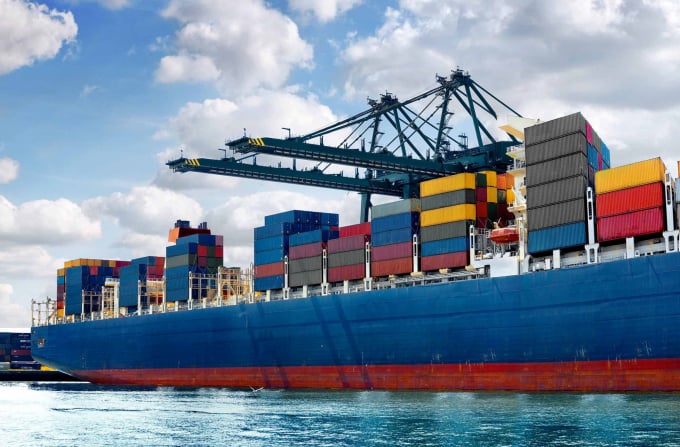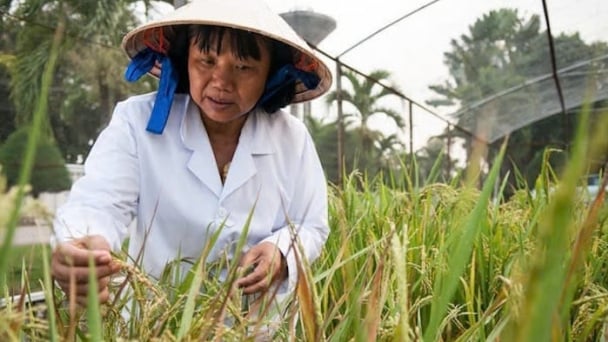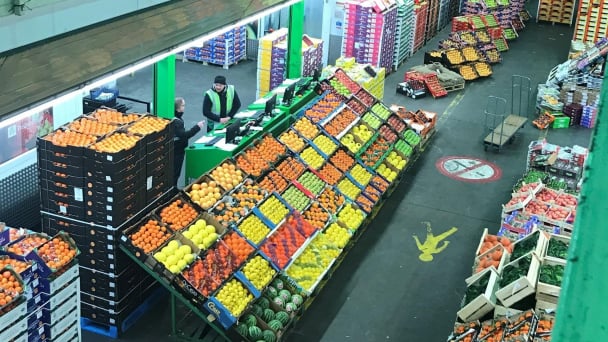May 16, 2025 | 17:17 GMT +7
May 16, 2025 | 17:17 GMT +7
Hotline: 0913.378.918
May 16, 2025 | 17:17 GMT +7
Hotline: 0913.378.918

Shipping lines reduce capacity as demand increases, causing sea freight rates to rise. Photo: TL.
According to the Vietnam Industry and Trade Information Center (Ministry of Industry and Trade), the demand for shipping plummeted in spring 2020, when world countries blockaded to prevent the spread of Covid- 19.
Then demand rose again in late summer 2020 as consumers ramped up their online shopping, from sports equipment to new video games and furniture, especially in Europe and North America.
However, when the demand for shopping increased again, the shipping lines reduced shipping capacity. According to Gordon Downes, CEO of the New York Shipping Exchange, while demand rebounded in the second half of 2020, ocean carriers were canceling inefficient shipments. As a result, shipping lines and ports were seriously stuck, while freight rates rose to record levels. In the future, carriers may continue to cancel high-risk or ineffective shipments to ensure their profits.
Earlier this year, many shipping lines continued to cancel ships from Asia to Europe. For example, the partners of the 2M Maersk Alliance and the Mediterranean Shipping Company announced the cancellation of four Eurasian trips during the New Year's Eve.
Many international market experts believe that it is unusual to reduce capacity of shipping lines while demand increases. “Big carriers have a tradition of pursuing revenue at all costs,” said Joshua Brogan, Vice President of strategic operations at AT Kearney, a global consulting firm. “They will want to increase capacity as demand increases so as to gain market share. Currently, however, the lines do not seem to increase capacity, causing demand to exceed supply and freight rates to skyrocket”.
According to international experts, lack of empty containers as well as warehouses for storage due to congestion at ports since the end of 2020 is the most recent sign of a global trade system going so tense.
Sea freight rates of some international shipping companies have increased so high, especially after October 2020, that profits of shippers are falling to a very low level. Cost of freight increased while the overall cost remained the same, putting pressure on companies. As a result, many companies will face bankruptcy this year.
The Covid-19 pandemic created seismic waves in global trade and sea shipments around the world. However, carriers quickly reduced volume and redundancy due to weaker demand, thereby supporting freight rates. This is partly due to the recent merge of three important shipping alliances: the 2M Alliance, the Oceanic Alliance and the High Efficiency Transport Alliance (THE). According to a report of S&P Global, the three alliances currently account for more than 80% of the global shipping market.
The rapid increase in shipping rates may cause businesses to reconsider agreements with transport service providers. Accordingly, more frequent negotiations with carriers and forwarders will become more common under “new normal” conditions.
The pricing based on a set of indicators for the maritime industry is also being applied more widely. Today, there are more indicators for goods owners to manage and keep contract rates. In addition, many large corporations are considering restructuring the supply chain... in order to reduce the number of sea shipments.
![Multi-channel, multi-directional Vietnamese agricultural markets: [7] Deep processing makes global reach easy](https://t.ex-cdn.com/nongnghiepmoitruong.vn/608w/files/huytd/2025/05/16/2946-che-bien-sau-chia-khoa-vang-nang-tam-nong-san-viet-tren-ban-do-the-gioi-080603_110-093858.jpg)
(VAN) The application of deep processing technology is helping Vietnamese agricultural products enhance their value, create competitive advantages, and open doors to conquer global consumers.
![Multi-channel, multi-directional Vietnamese agricultural markets: [6] Agri products go online](https://t.ex-cdn.com/nongnghiepmoitruong.vn/608w/files/content/2024/12/10/1-113313_954.jpg)
(VAN) Bringing agri products onto e-commerce platforms is an effective way to build a brand that many businesses, cooperatives, and agricultural production households are doing.

(VAN) Veterinary training should focus on quality, not just quantity. Veterinarians also need more options to pursue specialized training.

(VAN) The veterinary industry needs to be viewed objectively and further invested in to properly demonstrate its role and importance in the new context.

(VAN) The number of veterinarians graduating each year is not enough to meet actual needs, hence a difficult problem for the growing livestock industry.

(VAN) The strategic partnership between Cambodia, the Philippines, Vietnam, and CGIAR ensures that innovative solutions effectively address national priorities for food system development.

(VAN) This was affirmed by the UK Minister of State at the Department for Environment, Food and Rural Affairs during a working session with Deputy Minister Tran Thanh Nam on May 13.